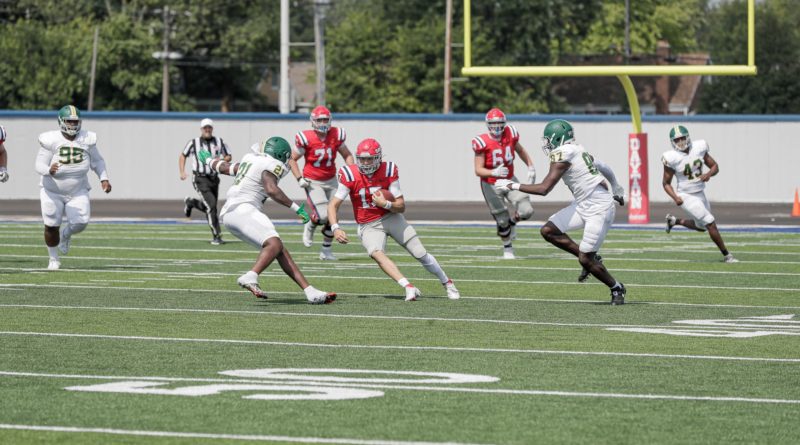Grit, Glory, and the Struggle for Recognition
Tehron Spencer | Contributing Writer
The University of Dayton Flyers football team storms the field at Welcome Stadium each weekend, driven by the fire, grit, and passion passed down from past teams. This spirit reverberates through the stadium, yet despite their consistent success, the Flyers struggle to capture the attention of the Dayton community. In a city passionate about its other sports, why does the Flyers football team not receive the same level of support?
Founded in 1905, the University of Dayton football program boasts an impressive record of 705-391-40 all-time. The Flyers have appeared in five national championship games, winning two during their time at the Division III level. At the Division I level, they have earned 12 conference championships and one FCS playoff appearance. Despite these achievements, the Flyers continue to struggle with community support and attendance. In 2023, Dayton football ranked 95th out of 128 FCS teams for attendance, with an average of just 3,964 fans per game. For comparison, Dayton basketball ranked 21st in the nation, drawing 13,407 fans on average. What’s behind this disparity?
Head football coach Trevor Andrews, a former Dayton player, believes one key factor in the program’s struggle for recognition is the move from Bajaun Field to Welcome Stadium. Bajaun Field, once home to Dayton football, was situated at the center of campus and could hold 17,000 fans. Students would watch games from the dorms, creating a palpable, on-campus atmosphere. The move to Welcome Stadium, however, which is located farther from campus, has led to a disconnect. “Welcome isn’t a great place to watch a game because the stands are so far from the action,” Andrews said. “It’s a great facility for track, but it’s huge for football.”
Another logistical issue that Andrews points out is the team’s noon kickoff times. Due to an agreement with Dayton Public Schools, the football team must play in the early afternoon, leaving no option for later or evening games. This makes it difficult for students and local residents to attend. Despite these challenges, Coach Andrews and the Flyers remain committed to the team’s success and the values they uphold.
Senior captain Ca’ron Coleman, while acknowledging the lack of fan support, says his motivation comes from within the team and not from public recognition. “I do it for the guys, my teammates, coaches, and family,” Coleman said. “It’s not about attention.” Coleman also mentioned the challenges posed by Dayton’s status as a non-scholarship FCS school. However, he emphasized that involvement in the local community has helped raise awareness of the team. “Rebuilding Dayton, I feel like that helps a bit. We had a couple of sophomores who went to the Ronald McDonald House, and guys who contribute to SAAC (Student-Athlete Advisory Committee). It all helps with community outreach.” Coleman also added that a change in the team’s conference could help by attracting higher-caliber players, potentially sparking more interest in the team.
Despite the challenges, Andrews and his team remain focused on building a legacy. “We get a good mix of kids, and you throw them into the locker room as 18-year-olds. You watch them grow, develop, and become men,” Andrews said. “They put petty differences aside and become brothers. They work toward a common goal of winning a championship. If the rest of the world was run like that, maybe we wouldn’t be seeing the stuff we’re seeing right now.”
The Flyers’ message to the Dayton community is clear: They’re a Division I program, putting in the hard work and competing to the best of their abilities. They strive to represent their community with pride, both on and off the field. “We recruit good players, and we represent the community,” Coleman said. While wins and losses are important, for the Flyers, it’s more about building character, forging strong bonds, and creating a lasting legacy—one that extends beyond the stadium and into the heart of the Dayton community.

